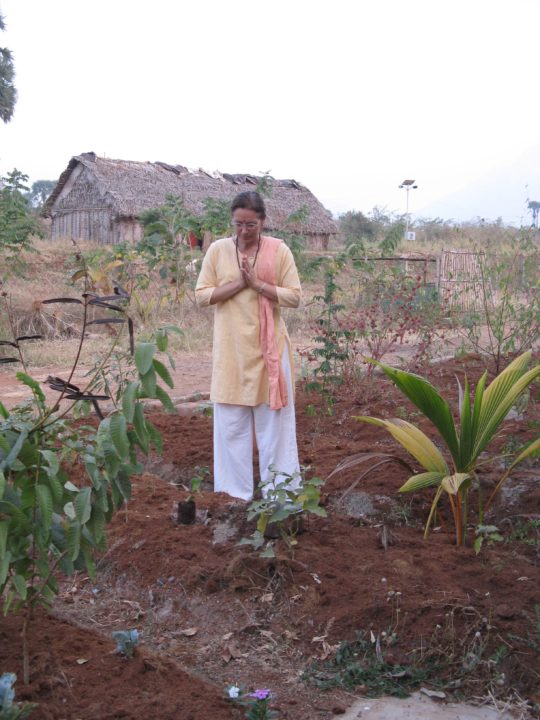
03 Jan Environment as Medicine (Vaidyagrāma—the Ayurvedic Eco- Village)
I suppose that, at any given time, there are always at least a few places on this planet that manage to manifest lofty ideals in practical ways that inspire and transform whoever participates.
In my estimation, vaidyagrāma, an Ayurvedic eco-village that provides education and Ayurvedic treatments about an hour outside of Coimbatore, South India, is one such place for this century. Some people have vision but it never manifests. Some have resources but lack vision. Somehow vaidyagrāma is a most inspiring product of both. From the beautiful, nourishing, “hospital” that is like none I have ever seen, to balagrama, the new (as of 2016) home for children from the surrounding villages who may need a safe place to live, eat, love and be educated, to the developing retirement community, to the 100 or so meals every day that are delivered to needy in the surroundings, to the thousands of trees that have now been planted there by patients, students, teachers, children…anyone who cares to share in the process, vaidyagrāma is a reflection of compassion, humanity and its soul.
My husband, Jim, and I spent the better part of a month here in 2011, receiving pañcakarma (an Ayurvedic regimen for improved health), living with the doctors, patients and students here, in a rural setting. One twilight, we witnessed a wild peacock fly into a coconut palm and, though we were looking directly at him, we could barely distinguish him from the tree, as his tail feathers mimicked the palm fronds. It reminded me that we tend to blend with and become part of our environment.
When the environment dictates parameters for living, it is easy (or at least much easier) to abide by those parameters. Over that month we avoided all stimulants in drink (there is no caffeine here), food (no strong flavors like very sour, sweet or spicy), lifestyle (a rural setting, early to bed, early to rise) or habits (no strenuous exercise, if any). Out in the “modern” world this would require significant discipline. Here it is not even something we think about, because it is not around us. Nobody else is doing it. It is not available. There are other things to think about or participate in.
There is no need for lengthy sermons about the evils of stimulants or to expound upon dogmatic lists of dos and don’ts when patients leave vaidyagrāma, because they have learned and experienced for themselves the benefits of a simple life. While people may not be literally throwing away their crutches at the end of a stay here (although I would not doubt it after what I have seen and experienced here), they are throwing away prescription drugs they no longer need (or cutting them down), pants that are now too big for them, and ideas that are too small.
Students who have studied the fundamental theory and practice of Ayurveda in the US or online, (like in our online Foundations of Ayurveda Part I and Part II courses) can find further education in advanced topics, pañcakarma practices and herbs here, under the watchful, expert and loving Dr. Ramadas, Dr. Hari Krishan, Dr. Ramanandan and others. Five students who had been through the program at The Ayurvedic Institute were at vaidyagrāma while we were receiving our pañcakarma and, by all counts, loved it. Five years later, the ones I’ve kept up with are still deeply engaged with, and practicing, Ayurveda.
Vaidyagrāma is not only honoring, treating and educating patients and students, it is also respecting the earth and her elements. The hot water is heated by solar power, they are experimenting with solar power, bio gas, working towards growing their own medicines and food for the community here and not only have the intention to continue in this direction, but are practically implementing “green” ideas on a regular basis.
In The Four Qualities of Effective Physicians: Practical Ayurvedic Wisdom for Modern Physicians, I talk about not only the possibilities for practitioners becoming medicine for their patients, but also for environment to be medicinal for patients. Vaidyagrāma succeeds, IMO, in this endeavor. I am grateful to its visionary architect, Dr. Ramkumar, as well as all who are working and coming here.
This post is repurposed from a blog Dr. Welch originally posted on 14 February, 2011.


